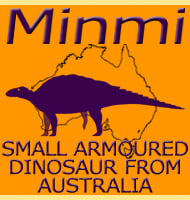Hungarosaurus
In Depth Several hundred bones from an estimated four individuals have been attributed to this genus, and together they make up the best represented European genus of nodosaurid dinosaur. Like its nodosaurid relatives, Hungarosaurus was an armoured quadrupedal dinosaur that would have browsed upon low growing vegetation. The armour would have been an arrangement of … Read more
